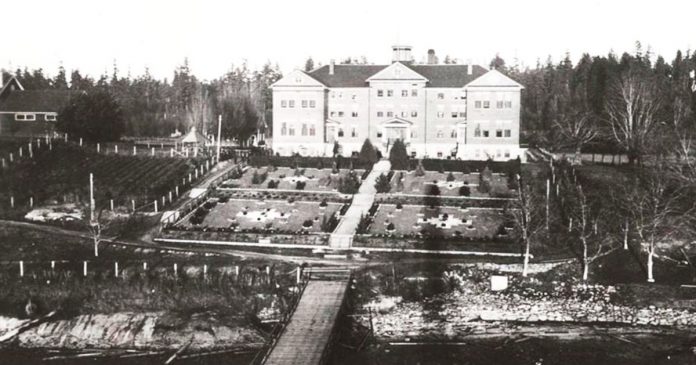New archaeological evidence from the former Kamloops Indian Residential School raises more questions about the narrative that 215 “probable burials” of Indigenous children were discovered at the site.
The evidence was unearthed by a professional architect with expertise in aerial photography and published by former anthropology professor Hymie Rubenstein in the REAL Indian Residential Schools Newsletter. The architect reported his findings under the pseudonym Kam Res to avoid retaliation. Res’ findings have not been peer-reviewed.
Other academics who have raised questions about the Kamloops graves have been cancelled and targeted by the media. Mount Royal University professor Frances Widdowson was removed from her tenured position due to being outspoken on Indigenous issues.
Aerial photography and historical documents show that the site where the graves were alleged to have been discovered has been subject to decades of archeological digs and other excavation activity which did not turn up any human remains.
The most significant of these digs took place in 1958 when a plot of over 100,000 square feet or 30% of an apple orchard just outside of the residential school was excavated for a sewage retention pond.
Other excavations have since taken place. In 1998, Simon Fraser University archaeologists visited the location to monitor construction activity where a water line was dug through the area. No graves were discovered or announced during the dig.
Additionally, in 2002, the Simon Fraser University Archaeology Field School excavated the orchard where fifteen pits were dug and no human remains were unearthed. No remains were discovered at another dig conducted by the school two years later.
“Archaeologists have been active on the site since the 1980s, conducting excavations and monitoring construction work. Deep trenches have been cut straight across the orchard and a sewage pond was excavated from the entire southwestern quadrant,” wrote Dr. Rubenstein.
Research by Prof. Sarah Beaulieu has claimed that Ground Penetrating Radar (GPR) findings indicate 200 “probable burials.” In her study, Beaulieu also relied on oral history and folklore to claim that children had been buried at the site since the late 1940s.
No excavations have been conducted to date to confirm the claims and Beaulieu has yet to release a detailed report on her findings so their veracity can be determined.
“Given that the apple orchard is deeply textured by centuries of human activity, how can it be said that Dr. Beaulieu’s targets are more ‘probably’ graves than other features of human activity?” wrote Dr. Rubenstein.
“With more than 30 percent of the orchard already excavated and no graves discovered, is it likely that a staggering 200 burials are scattered throughout the remaining area?”
Last year, the Kamloops Indian Band issued a press release which prompted a global media frenzy surrounding the unconfirmed burial allegations.
“It is with a heavy heart that [Tk’emlúps te Secwépemc Chief] Rosanne Casimir confirms an unthinkable loss … This past weekend, with the help of a ground penetrating radar [GPR] specialist, the stark truth of the preliminary findings came to light – the confirmation of the remains of 215 children who were students of the Kamloops Indian Residential School,” claimed the press release.
The announcement led to a series of Christian churches being vandalized and burnt down, calls to cancel Canada Day and Prime Minister Justin Trudeau lowering the flag to half-mast for over six months.

